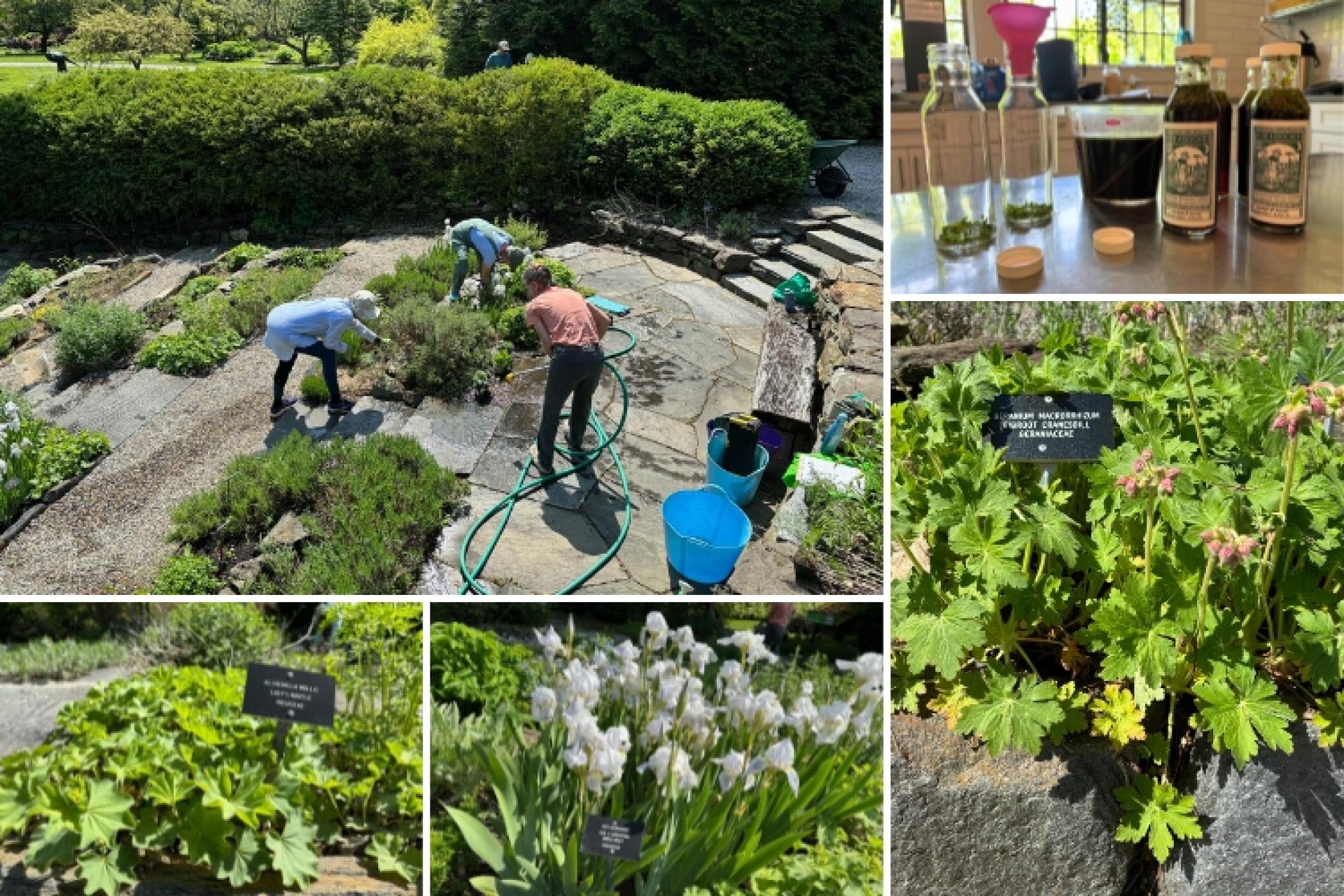You are here
What Is Happening at the BBG Herb Gardens and Kitchen?
What Is Happening at the BBG Herb Gardens and Kitchen?
By Barbara F. Smith
Bigroot Cranesbill (Geranium macrorrhizum), also known as musk geranium, is blooming in the BBG Herb Display Gardens. Musk geranium is one of about 300 species found in the genus Geranium; they are native to Europe. These hardy perennials derive their name “macrorrhizum” from their characteristic long, stout rhizome (rootstock). Cranesbill geraniums thrive in part shade and rich, well-drained soil. Blossom colors vary from white through very pale pink through deep magenta, depending on the variety. The plants are popularly used as groundcover.
This geranium’s fragrance has been described as “sweet-woody with a floral and faintly herbaceous undertone.” It is written that “if you like spicy Oriental perfumes such as Cinnabar by Estee Lauder, you will love musk geranium.” (This plant should not be confused with Pelargoniums — also known as scented geraniums.) The oil of musk geranium is imported from Bulgaria and sometimes used in perfumery. Home gardeners might include the leaves in potpourri.
Lady’s Mantle (Alchemilla mollis) is a perennial herb with beautiful leaves and an interesting history. The scalloped leaves hold water droplets (whether dew or rain), a clue to discovering how the plant was named. While the origin of the name “Alchemilla” is unknown, lore has it that in centuries past, alchemists would gather the droplets of pure water from these plants for use in their experiments to create gold from base metals. Historically, Lady’s Mantle has been used in soaps and dyes, and to treat stomach ailments.
Today, Lady’s Mantle is often used ornamentally in borders or as a ground cover, where the plant’s graceful mounding habit and downy leaves add a pleasing look. The June-blooming frothy flowers are a distinctive chartreuse color, prized in flower arrangements. These plants thrive in cool, wet climates and moist, rocky soil.
Orris Root (Iris germanica var. florentina). This iris has large white flowers tinged with lavender and a yellow beard. The root has a violet scent that has been powdered and used in perfumes since the times of the Ancient Egyptians and Greeks. The plant’s roots take 3-4 years to mature to harvestable size and the drying process (which concentrates the fragrance) takes another two years or more. An 1870 ’s reference book notes that powdered orris root could be used in combination with starch, attar of lemon or bergamot and cloves “for those who are still powdering their wigs.” Today, the dried root remains in use in perfumery, as a fixative for potpourri, and as a flavoring agent in many varieties of gin!
IN THE KITCHENS
The chive harvest continues, with the Herb Associates’ Kitchen Crew preparing a batch of Herb and Lemon Stir Fry Sauce and a batch of Sweet and Sour Stir Fry Sauce with Chives. Home cooks may add either of these products to their favorite stir fry recipes – mixed vegetables, chicken, beef or pork for a delicious taste treat. These products are available in the BBG Gift Shop.
The Berkshire Botanical Garden’s Herb Associates began in 1957 and have been making and selling products for the benefit of BBG ever since. At BBG, the Herb Associates oversee a display garden and production garden, both located near the Center House. Members/volunteers meet every Tuesday morning during the late spring through mid-autumn each year, coinciding when the gardens themselves are open to the public. Members plant, weed and tend the gardens, as well as harvest and process the variety of herbs.
Help Our Garden Grow!
Your donation helps us to educate and inspire visitors of all ages on the art and science of gardening and the preservation of our environment.
All donations are 100 percent tax deductible.



